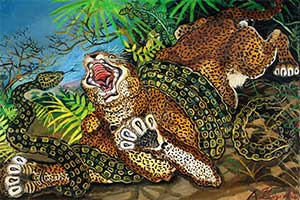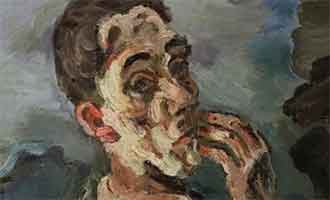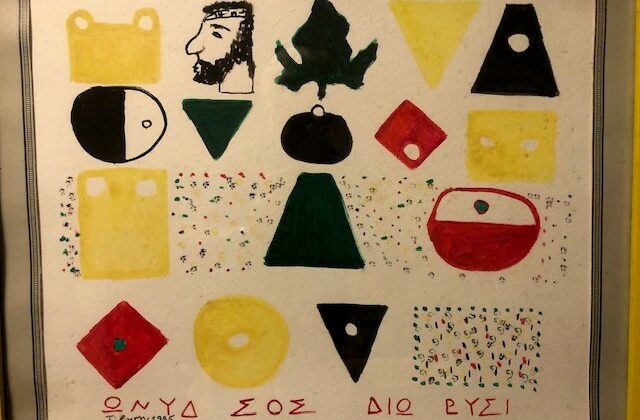Ligabue, genius and madness
Francesco Carelli, University Milan , Rome
Antonio Ligabue is a self-taught artist. His pictures are childlike and uninhibited, based on instinct. Considered one of the most interesting artists of the 20th century, his genius is founded on solitude and emargination. Liguabue suffered from mental illness and experienced neglect and abandonment in childhood.
 A big exhibition is running at Castello Sforzesco in Pavia. Italy was the adopted home of this painter, who was born in German-speaking Switzerland and died in the 1960s in Gualtieri, a village along the banks of the river Po he’d come to 46 years earlier.
A big exhibition is running at Castello Sforzesco in Pavia. Italy was the adopted home of this painter, who was born in German-speaking Switzerland and died in the 1960s in Gualtieri, a village along the banks of the river Po he’d come to 46 years earlier.
He loved to portray animals, both domestic and exotic, in situations of tranquility or conflict (ambushes, attacks and the endless, frenzied struggle for survival).
And scenes of daily life are not lacking in his work (farmers returning home at sunset, plowing), many are also Swiss landscapes, the circus, hunting scenes; his gaze is forever that of a child.
Ligabue also likes to make self-portraits: hundreds of works capture the torment and bitterness that left a mark on his life and face, much of which for the hostility and misunderstanding he was met with.
Paintings on show include “Horse-drawn Carriage in the Swiss Countryside” (1956-1957), “Table with a Vase of Flowers” (1956) and “Gorilla with Woman” (1957-1958), his “Self-Portrait with Motorcyclist’s Cap” (1954-1955) as well as bronze sculptures like “Siberian Wolf” (1936).
There’s also a section devoted to graphic design, with drawings and etchings like “Mammoth” (1952-1962), “Sulki” (1952-1962) and “Self-Portrait with Jockey’s Cap” (1962), as well as a section on his incredible personal life.
“What’s so fascinating about his work,” said the curator of the show, Sandro Parmiggiani, “is the constant blend of two distinct visions that would ordinarily be considered as contradictory and irreconcilable: visionary intenseness and mannerist decorativism.”
“Ligabue managed, as only great painters can, to have twofold emotions cohabit the same work: the firing up of empathy, colors and narrative power, the exasperation of shapes, sweeping all up in a sort of panic whirlwind; and the decorative drive that disseminates and reiterates motifs and patterns as in the coats of animals, in clothes and vegetation, in indoor scenes and outside architectures of castles and buildings,” said Parmiggiani.
For year Ligabue’s work evaluation was misguided and impoverished by definition of “naif” associated, more recently, with that of artist indelibly marked by madness – label that still fascinates and calls some deep curiosity.
Self-portraits are a top strand and bitter poetry in Ligabue’s art. In them the painter ranks himself in the foreground, as willing to occupy all the space of the scene, on the background of a landscape that seems almost always, with rare exceptions, a detail totally irrelevant. His self-portraits summarize a constant human condition of desolation and anguish of loss, a slow journey towards the final outcome; his face expresses pain, fatigue, dismay, pain of living; any relationship with the world seems to have been forever severed, as if the artist could now only tell, for one last time, the tragedy of a face and a look, that does not care to see things around him, but asking, for once, to be looked at.
The constant representation of his goiter hypertrophy, wrinkles on the forehead and cheeks, deliberately accentuated, with sometimes dark recesses that seem to lead to the oral cavity, the unkempt beard and disheveled thinning hair, eyes with iris that looks as if were on the alert for some ambush that always can occur, the nose that bears the marks of torture inflicted to it by the artist himself. There are no serenity or indifference in Ligabue’s self-portraits. His eyes always seem intent on perceiving what can stand behind them, as if he too would be a hunted animal, he know he cannot allow himself a respite, a moment of abandon, because a deadly pitfall may be lurking.



